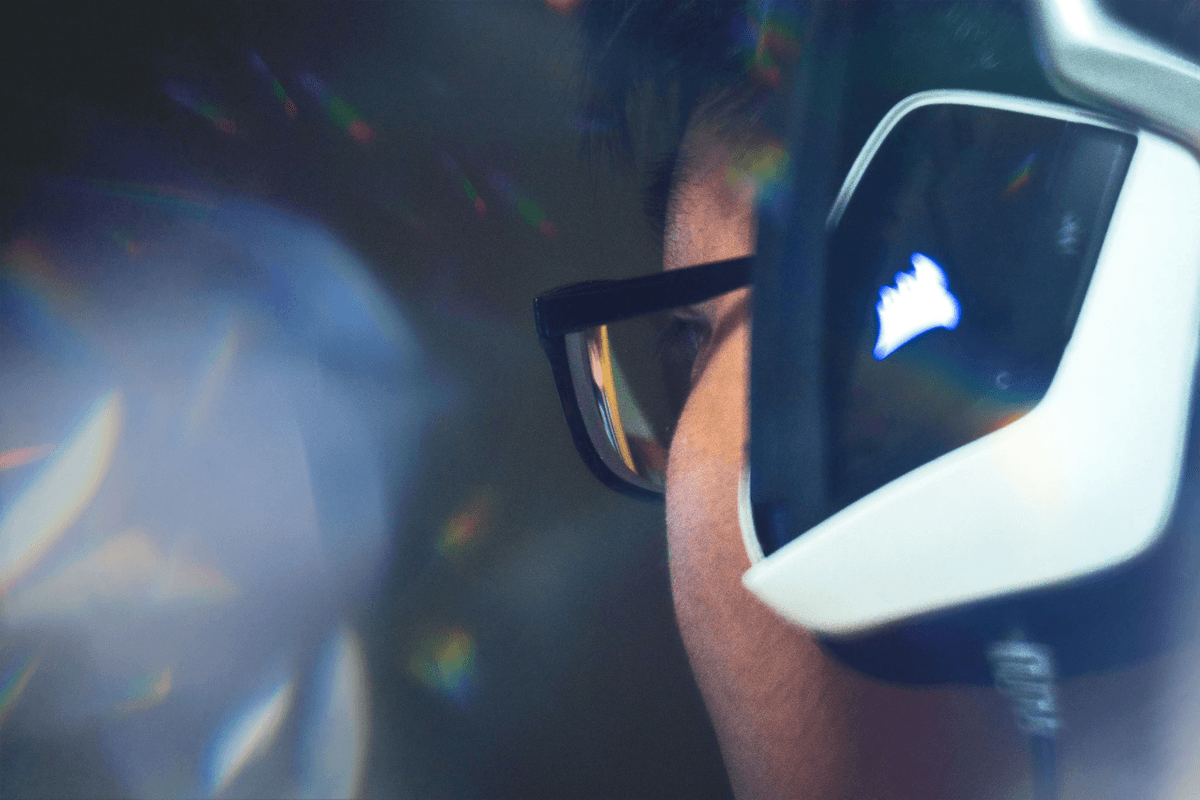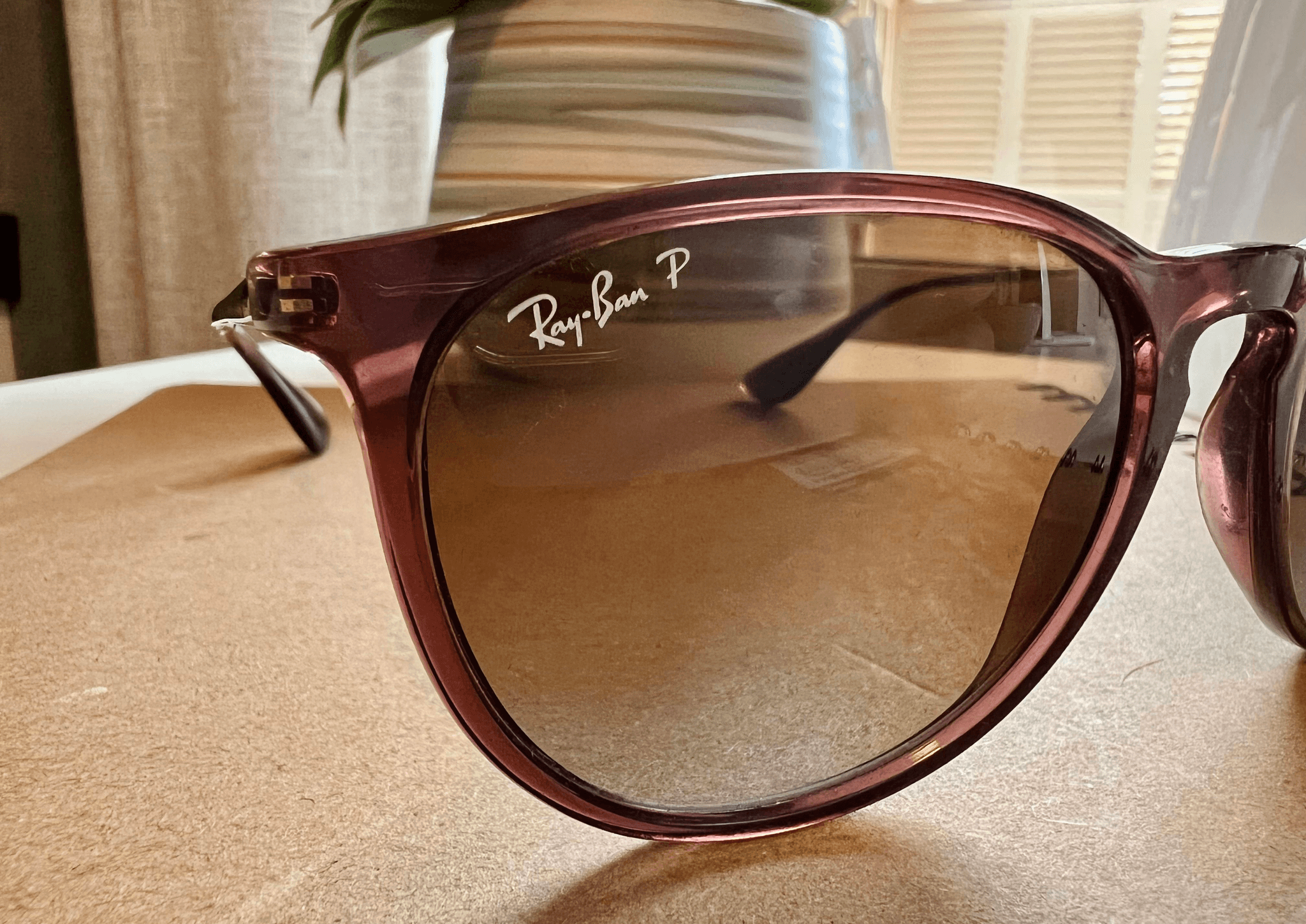Introduction
The world of technology is evolving at an unprecedented pace, and smart glasses are emerging as a revolutionary player in this space. With the integration of AI, these devices have transformed from mere accessories into powerful tools that enhance our daily lives. As we delve deeper into the realm of AI enhanced glasses, we can explore their capabilities and what lies ahead in 2025.
The Rise of Smart Glasses in Tech
Smart glasses have become a hot topic in tech circles, captivating consumers with their blend of functionality and style. From social media integration like that seen in Meta AI glasses to innovative designs like Ray-Ban Stories, these devices are reshaping how we interact with technology on the go. The question on many minds is: Are the AI glasses real? As more brands enter the market, it's essential to discern which models truly deliver on their promises.
Understanding AI Enhanced Glasses
AI enhanced glasses represent a significant leap forward from traditional smart glasses by incorporating advanced features powered by artificial intelligence. These functionalities can range from voice recognition to augmented reality overlays that provide real-time information about our surroundings. With such capabilities, one might wonder: Are there prescription AI glasses? Fortunately, advancements are being made to cater to users who require vision correction without sacrificing technological benefits.
What to Expect from 2025 AI Models
Looking ahead to 2025, we can anticipate even more sophisticated models that will redefine our expectations for wearable tech. Innovations may include seamless connectivity with other smart devices and enhanced user interfaces that make interaction intuitive and engaging. So when considering options like Ray-Ban AI glasses or Meta AI glasses, it's crucial to ask: What's the difference between AI glasses and smart glasses? Understanding these distinctions will help consumers choose wisely as they navigate this exciting landscape.
Top Smart Glasses on the Market

The world of smart glasses is evolving rapidly, with several innovative models capturing the attention of tech enthusiasts and everyday users alike. Among these, Ray-Ban Stories, Meta AI Glasses, and Bose Frames stand out for their unique features and user experiences. Let's dive into what makes each of these smart glasses a worthy contender in the AI-enhanced glasses market.
Ray-Ban Stories: Fashion Meets Function
Ray-Ban Stories are not just your average pair of sunglasses; they seamlessly blend style with cutting-edge technology. These smart glasses come equipped with dual 5MP cameras that allow you to capture photos and videos hands-free, making them perfect for social media lovers who want to document their lives effortlessly. With built-in speakers and a microphone, users can enjoy music or take calls without needing additional devices—truly a fashion statement that doesn’t compromise on functionality.
Are Ray-Ban AI glasses worth it? The answer often lies in personal preference—if you value aesthetics as much as advanced features, these might just be your go-to choice. Plus, their compatibility with various social media platforms makes them an appealing option for those who want to stay connected while looking chic. Overall, Ray-Ban Stories exemplify how fashion can harmoniously coexist with technology in the realm of AI-enhanced glasses.
Meta AI Glasses: Social Media on Your Face
Meta AI Glasses are designed specifically for the social media-savvy individual who craves connectivity at all times. These smart glasses offer an immersive experience by integrating augmented reality features that enhance your interactions online while allowing you to engage with your surroundings simultaneously. Imagine scrolling through notifications or responding to messages without having to pull out your phone—this is where Meta AI Glasses shine.
But are the AI glasses real? Yes! They provide genuine functionalities like voice commands and gesture controls that make managing your digital life more intuitive than ever before. The intersection of augmented reality and social media truly sets these glasses apart from traditional smart eyewear; they’re not just about looking good but also about enhancing everyday experiences through technology.
Bose Frames: Sound and Style Combined
Bose Frames take a different approach by prioritizing audio quality alongside sleek design in their offerings of smart glasses. Equipped with premium speakers embedded within the frames, these stylish sunglasses deliver an exceptional sound experience without compromising comfort or aesthetics—perfect for music lovers on-the-go! Whether you're enjoying a podcast during a stroll or listening to music while running errands, Bose Frames ensure you don’t miss out on sound quality.
Now you might wonder if there are prescription AI glasses available? The answer is yes! While Bose Frames primarily focus on audio capabilities, they also offer options compatible with prescription lenses so that everyone can enjoy this unique blend of sound and style. With such versatile offerings in today’s market, it’s essential to understand what's the difference between AI glasses and smart glasses when choosing which suits your needs best.
Are the AI Glasses Real?

The buzz surrounding AI glasses has many people asking, Are the AI glasses real? As technology advances, distinguishing between genuine AI features and mere marketing gimmicks becomes crucial. With the rise of smart glasses, particularly models like Meta AI glasses, it’s essential to explore what sets authentic AI-enhanced glasses apart from their less sophisticated counterparts.
Exploring Authentic AI Features
Authentic AI features in smart glasses can range from voice recognition to augmented reality overlays that enhance your daily interactions. For instance, some models allow you to control functions through voice commands or provide real-time translations of foreign languages displayed directly in your field of vision. This level of integration showcases how far we’ve come in merging artificial intelligence with wearable technology, making it clear that not all smart glasses are created equal.
When considering whether Are there prescription AI glasses? the answer is yes; some brands are beginning to offer this innovative combination for those who need vision correction. However, it's important to scrutinize which features are genuinely powered by advanced algorithms versus those simply marketed as smart. The authenticity of these features will often determine whether a pair of Ray-Ban AI glasses or other options is worth investing in.
Real-World Applications of AI Glasses
The potential applications for ai enhanced glasses are vast and varied, extending beyond mere novelty into practical utility. From navigation assistance while driving to hands-free video calls during work meetings, these devices can significantly enhance productivity and convenience in everyday life. Imagine walking through a new city while receiving directions displayed right before your eyes—this is just one example of how real-world applications can transform our experiences.
Moreover, industries such as healthcare and education have begun integrating these technologies into their operations. Surgeons can utilize augmented reality overlays during procedures for better precision, while educators can create immersive learning environments that engage students like never before using Meta AI glasses or similar devices. Thus, it’s clear that ai enhanced glasses hold promise well beyond personal use.
User Experiences with AI Glasses
User experiences with ai enhanced glasses vary widely based on individual needs and expectations; some rave about their functionality while others express frustration over limitations. Many users appreciate the seamless integration of smart features into their daily routines but may find issues with battery life or connectivity at times—common challenges faced by early adopters of any new technology.
Feedback on specific models like Ray-Ban's offerings has been mixed; while some users find them stylish and functional, others question whether they truly deliver value compared to traditional eyewear options. As we continue to explore this evolving market landscape, understanding user experiences will be vital for determining what's genuinely worthwhile when asking if Are Ray Ban AI glasses worth it?
Prescription AI Glasses: A New Frontier

The emergence of prescription AI glasses marks a significant evolution in the world of smart eyewear. These innovative devices combine vision correction with advanced technology, allowing users to experience the benefits of AI enhanced glasses without compromising their sight. As more brands enter this space, the question arises: Are there prescription AI glasses that truly deliver on both fronts?
Can You Get Prescription AI Glasses?
Yes, you can indeed get prescription AI glasses! This new wave of eyewear integrates vision-correcting lenses with cutting-edge technology to provide an all-in-one solution for those who need vision assistance and want to stay connected. As companies like Ray-Ban and Meta continue to innovate, consumers are increasingly asking, Are the AI glasses real? The answer is a resounding yes—these products are not just a gimmick; they offer tangible benefits.
Benefits of Prescription in Smart Glasses
The integration of prescription lenses into smart glasses offers numerous advantages. First and foremost, it allows users with visual impairments to enjoy features like augmented reality and notifications without sacrificing clarity or comfort. Additionally, prescription AI glasses can enhance user experience by providing personalized features tailored to individual needs, making them an attractive option for tech-savvy individuals who prioritize both style and functionality.
Leading Brands Offering Prescription Options
Several leading brands are stepping up their game by offering prescription options in their smart eyewear lines. Companies like Ray-Ban have successfully blended fashion with function, creating stylish frames that accommodate various prescriptions while incorporating advanced technology. Similarly, Meta AI glasses are designed not only for social media engagement but also cater to those requiring corrective lenses—proving that you can have your cake and eat it too when it comes to smart eyewear.
Differentiating AI Glasses and Smart Glasses

In the ever-evolving landscape of wearable tech, distinguishing between AI glasses and smart glasses is crucial for consumers looking to enhance their daily lives. While both types of eyewear offer innovative features, they cater to different needs and preferences. This section dives into the core features of smart glasses, explores the unique functions that AI enhanced glasses bring to the table, and provides guidance on when to choose one over the other.
Core Features of Smart Glasses Explained
Smart glasses have become a staple in modern technology, boasting a variety of core features designed to improve user experience. Typically, these devices include built-in cameras for capturing photos or videos, voice command capabilities for hands-free operation, and integration with smartphones for notifications and calls. The functionality often revolves around displaying information directly in the user's line of sight—making them a practical choice for those seeking convenience without an overwhelming tech overlay.
However, it’s important to note that not all smart glasses are created equal; some focus on style while others prioritize functionality. For instance, models like Meta AI glasses blend social media connectivity with stylish designs—perfect for trendsetters who want to stay connected at all times. So when asking What's the difference between AI glasses and smart glasses?, remember that core features can vary significantly based on brand and model.
AI Functions That Enhance User Experience
AI enhanced glasses take things a step further by incorporating advanced artificial intelligence capabilities that enrich how users interact with their environment. These functions may include real-time translation of spoken language or text displayed in front of your eyes—ideal for travelers or those learning new languages. Additionally, image recognition technology can provide contextual information about objects you encounter throughout your day.
The integration of machine learning allows these devices to adapt over time, personalizing user experiences based on habits and preferences. This means that while traditional smart glasses offer basic functionalities like notifications and calls, AI enhanced options elevate everyday tasks into seamless interactions powered by intelligent software. Therefore, when contemplating whether Are the AI glasses real? keep in mind that their capabilities often extend beyond what standard smart eyewear can deliver.
Use Cases: When to Choose Which
Choosing between AI enhanced glasses and standard smart glasses largely depends on individual needs and specific use cases. If you're someone who values basic connectivity—like receiving messages or taking occasional photos—then traditional smart glasses may be sufficient for you without breaking the bank on more complex technology. However, if you're seeking cutting-edge functionalities such as augmented reality applications or advanced voice-activated commands that make life easier during travel or work tasks, then investing in AI enhanced models is likely worthwhile.
For example, professionals might find Meta AI glass features particularly beneficial during meetings where real-time data access is essential; meanwhile casual users may prefer Ray-Ban's stylish approach without heavy tech integration—prompting questions like Are Ray Ban AI glasses worth it? Ultimately, understanding your lifestyle requirements will guide you toward making an informed decision about which type suits you best.
The Value of Ray-Ban AI Glasses

Ray-Ban AI glasses have caught the attention of tech enthusiasts and fashionistas alike, but are they really worth the hype? With a blend of style and functionality, these ai enhanced glasses promise to elevate your everyday experience. However, potential buyers often wonder: Are Ray-Ban AI glasses worth it?
Are Ray-Ban AI Glasses Worth It?
When considering whether Ray-Ban AI glasses are worth the investment, one must weigh their features against their price tag. These smart glasses integrate cutting-edge technology with the iconic design that Ray-Ban is known for, making them a fashionable choice for many. However, the question lingers: Are the AI glasses real in terms of delivering genuine benefits over traditional eyewear?
The value proposition becomes clearer when you consider how these ai enhanced glasses enhance daily activities such as navigation, communication, and entertainment. Users can expect seamless integration with smartphones and other devices while enjoying hands-free capabilities that set them apart from standard smart glasses. Ultimately, whether they’re worth it depends on how much you value style combined with innovative technology.
Unique Selling Points of Ray-Ban
Ray-Ban has long been synonymous with quality eyewear, and their entry into the realm of smart technology showcases unique selling points that stand out in a crowded market. First and foremost is their iconic design; these ai enhanced glasses maintain a classic aesthetic while incorporating modern features that appeal to both tech-savvy users and fashion-conscious individuals alike.
Additionally, Ray-Ban's partnership with Meta brings social media capabilities directly to your face through Meta AI glasses integration—allowing users to capture moments effortlessly or stay connected without reaching for their phones. The audio experience is another highlight; built-in speakers deliver exceptional sound quality without compromising on style or comfort.
Customer Reviews and Feedback
Customer reviews reveal a mixed bag when it comes to user experiences with Ray-Ban AI glasses—some rave about their functionality while others express concerns about battery life or weight. Many users appreciate how these ai enhanced glasses allow for hands-free operation during daily tasks like taking calls or listening to music while on the go. However, some skeptics still question: What’s the difference between AI glasses and smart glasses?
Feedback often highlights that while these smart sunglasses offer impressive features like voice commands and social media integration, they may not fully replace traditional eyewear for everyone—especially those needing prescription options. As more consumers explore whether there are prescription AI glasses available from leading brands like Ray-Ban, it's clear that innovation is just beginning in this exciting space.
Conclusion

Smart glasses have come a long way, and the future looks even more promising. With advancements in technology, we can expect AI enhanced glasses to become more integrated into our daily lives, providing seamless interactions and enhancing various experiences. As we move towards 2025, the question of Are the AI glasses real? will be answered as these devices evolve from mere novelties to essential tools.
The Future of Smart Glasses Technology
The future of smart glasses technology is bright, with innovations that promise to redefine how we interact with our environment. We can anticipate more sophisticated features in AI enhanced glasses that leverage machine learning and augmented reality to create immersive experiences. Additionally, the rise of prescription AI glasses suggests that inclusivity will be a priority, allowing users with vision impairments to enjoy the benefits of smart eyewear.
How Daposi is Innovating the Industry
Daposi stands out in the crowded market by focusing on user-friendly designs and cutting-edge technology that enhances functionality without sacrificing style. Their commitment to integrating advanced AI capabilities into their products ensures that consumers will experience true innovation when they wear their smart glasses. With features that address common questions like Are there prescription AI glasses? Daposi is paving the way for a new era in eyewear.
Choosing the Right Smart Glasses for You
When it comes to choosing smart glasses, it’s essential to consider your lifestyle and specific needs—after all, not every pair suits everyone! If you’re pondering What's the difference between AI glasses and smart glasses?, remember that while all AI glasses fall under the smart category, not all smart glasses have integrated AI functionalities like those found in Meta AI glasses or Ray-Ban models. Ultimately, whether you’re drawn to stylish designs or advanced tech capabilities like those offered by Ray-Ban AI glass options, finding a pair that resonates with your personal style and practical requirements is key.
